Pancreatitis in dogs and cats
PANCREATITIS IN DOGS AND CATS – CAUSES AND TREATMENT
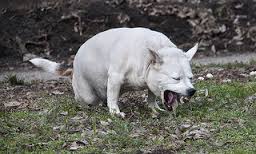
Pancreatitis in dogs and cats is a disease that has been around for a long time but until recently the only way of diagnosing it was with an ultrasound or surgery and a biopsy. The blood test and the in-house test that can be run at the vets was launched two to three years ago and since then, many more pets are being diagnosed with pancreatitis than ever before.
WHAT IS PANCREATITIS?
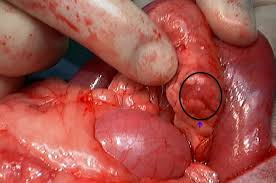
Pancreatitis is inflammation of the pancreas. The pancreas is an organ that lies under the stomach. It has two main functions:
1. To produce enzymes that digest the food and
2. To produce insulin to regulate blood sugar levels.
When your dog or cats eats a meal, it is broken down partially by chewing, saliva and enzymes in saliva, the churning of the stomach and the stomach acid. Once it leaves the stomach, the food, which now looks like a thick soup, enters the intestine. The pancreas is activated by the secretion of stomach acid to release its enzymes onto the food. It is connected to the intestine by the pancreatic duct which is a tube with a one way valve at the bottom entering the intestine. The enzymes flow down the tube onto the food, and the enzymes cleave the proteins and starches in food into much smaller sizes so that they can be absorbed into the body.
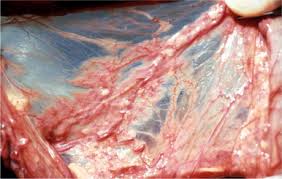
When a pancreas becomes inflamed, it gets ‘leaky’ and the enzymes which should travel straight down the pancreatic duct now leak into the tissue of the pancreas and the organs that it lies up against. They start to digest the pancreas and the surrounding areas. This causes everything to become very irritated, swollen and painful which leads to pain in the abdomen, vomiting, diarrhoea and in severe cases shock and kidney problems.
WHAT CAUSES PANCREATITIS?
Pancreatitis is a disease that unfortunately may not have an obvious cause. It may be caused by bacteria that enter the pancreas when the intestine is inflamed and the one way valve that closes the pancreatic duct off from the intestine, opens due to inflammation. Bacteria can cause a septic pancreatitis or a pancreatic abscess. This is rare, however. Sometimes pancreatitis can follow on a viral or bacterial gastroenteritis (inflammation of the stomach and intestines)
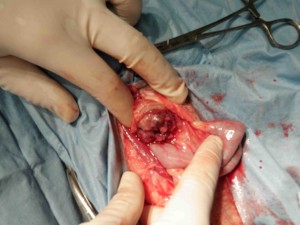
Sometimes if your pets eats a meal that is very rich, fatty or rotten, it can lead to pancreatitis. Pets with diabetes mellitis are more prone to developing pancreatitis.
Pets with lymphoma cancer of the gut can also sometimes have concurrent symptoms of pancreatic disease. Pets can have primary pancreatic cancer or cancer that has spread from other organs and this can lead to symptoms of pancreatitis. In many cases, however, there is no obvious cause of the pancreatitis.
SYMPTOMS OF PANCREATITIS
The symptoms of pancreatitis are unfortunately very similar to the symptoms of a nasty tummy bug. Only a blood test can differentiate the two.
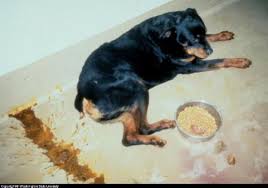
- Vomiting
- Diarrhoea – sometimes with blood
- Pain in the abdomen (stomach ) The ‘prayer’position is typical for pancreatitis – dogs look they are praying – it’s the most comfortable position for their sore abdomens.
- Depression
- Dehydration
- Weight Loss (low grade long term pancreatitis)
- Jaundice or icterus
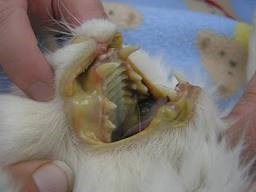
- Shock
- Collapse
- Liver and Kidney problems
- Death
Severe pancreatitis that leads to death is not that common, but it is common for dogs and cats to be hospitalised and put onto a drip for three days, together with medication for nausea, antacids and pain and sometimes antibiotics. It is also common for it to never really settle down completely, and for patients to get repeated flare ups every few months during which time they may or may be need to be admitted into hospital.
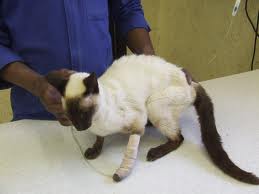
DIAGNOSING PANCREATITIS
If your vet suspects your dog or cat has pancreatitis, he or she will take a blood test to check for elevated levels of a particular form of an enzyme called lipase in the bloodstream. This type of lipase is only found in the blood when the pancreas is inflamed and ‘leaky’ and escapes into the bloodstream. If that is positive, your vet will keep the blood sample and send it to the lab so that the lab can work out the concentrations of the enzyme in the bloodstream.

Your vet will also run other blood tests to find out of the pancreatitis has affect your pet’s kidneys which can happen in severe cases and also of the liver enzymes and bile are up, which can indicate that the pancreas is swollen and stopping the liver excreting bile by pressing up against the bile duct. (The pancreas and liver can share a common pancreatic and bile duct in some species.) Your vet will also run a cell count of the red and white cells in the bloodstream to check if there are any signs of high levels of white blood cells which can indicate inflammation, infection and cancer, or if there are low levels of white blood cells which can indicate immune deficiency.
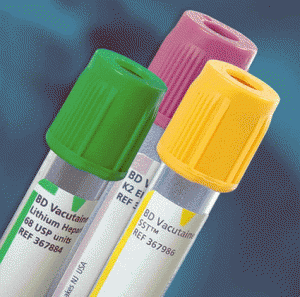
Your vet should recommend an ultrasound scan of the abdomen to check the pancreas. What your vet or ultrasonographer will look for on a scan are the following:
- The size and shape of the pancreas and whether it appears swollen or not
- Any lumps on the pancreas or areas of increased or decreased density which could indicate something like an abscess or growth (tumour) on the pancreas
- The liver’s size and shape and whether the bile duct is blocked or open normally
- Any sign of thickening of the intestine which could indicate something like inflammatory bowel disease or lymphoma cancer.
- The stomach wall and whether it appears normal, thickened, ulcerated and if there are any growths in the stomach wall.
- The size and shape of the kidneys
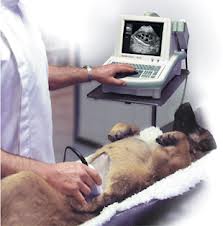
A true diagnosis of pancreatitis can only be made with a fine needle biopsy of the pancreas. Elevated levels of pancreatic lipase – known as spec FPL or spec CPL (cats and dogs ) occur whenever there is inflammation of the pancreas. So in a primary pancreatitis, the levels will be high, but in a disease that causes inflammation of the pancreas as a secondary effect of the disease, such as cancer of the gut that has invaded the pancreas, the levels can also be elevated.
A blood test should follow a month later after the pet is better to reassess the levels of spec FPL and spec CPL.
TREATMENT OF PANCREATITIS
The main thing owners have to be aware of is that once a pet has had pancreatitis, it may be a lifelong condition, and they will most likely have to put their pet on a special low fat diet, quite possibly for the rest of their lives. It is a disease that is likely to flare up periodically for the rest of the pet’s life and it is a case of managing the disease, rather than curing it.

Low fat diets include Royal Canin Gastrointestinal moderate and low calorie food, hills w/d and I/d low fat as well as various intestinal diets such as Hills I/d diet and Royal Canin sensitivity control.
Medication given is usually a combination of painkillers if the abdomen is very sore, antacid drugs and anti-nausea medication. Antibiotics are given if the vet suspects an infection or abscess in the pancreas.
Antacids are given – these are quite important. Because the pancreas is stimulated by stomach acid to release its enzymes and because when it is inflamed, it irritates itself by leaking them enzymes when it is trying to secrete them, blocking stomach acid production helps to settle the pancreas down and allow it to heal. Drugs are given in hospital initially and then the animals are sent home with at least 2 weeks’ worth of antacid drugs.
Anti nausea drugs are given as an inflammed pancreas makes a pet very nauseous.
Animals with moderate to severe pancreatitis must have a drip. This is because there can be toxins produced by an inflamed pancreas which can enter the bloodstream and damage other organs such as the kidneys, leading to shock, microclots forming in the circulation and death. The fluids in the drip wash out the circulation, removing the toxins from where they are pooling in slower moving blood vessels. they can then be detoxified and gotten rid of by the liver or kidneys. The kidneys are especially vulnerable. The drip should stay on for 2-3 days.
Animals are sent home with bland food, antacids, anti nausea drugs and possibly antibiotics.

Leave a Reply
You must be logged in to post a comment.